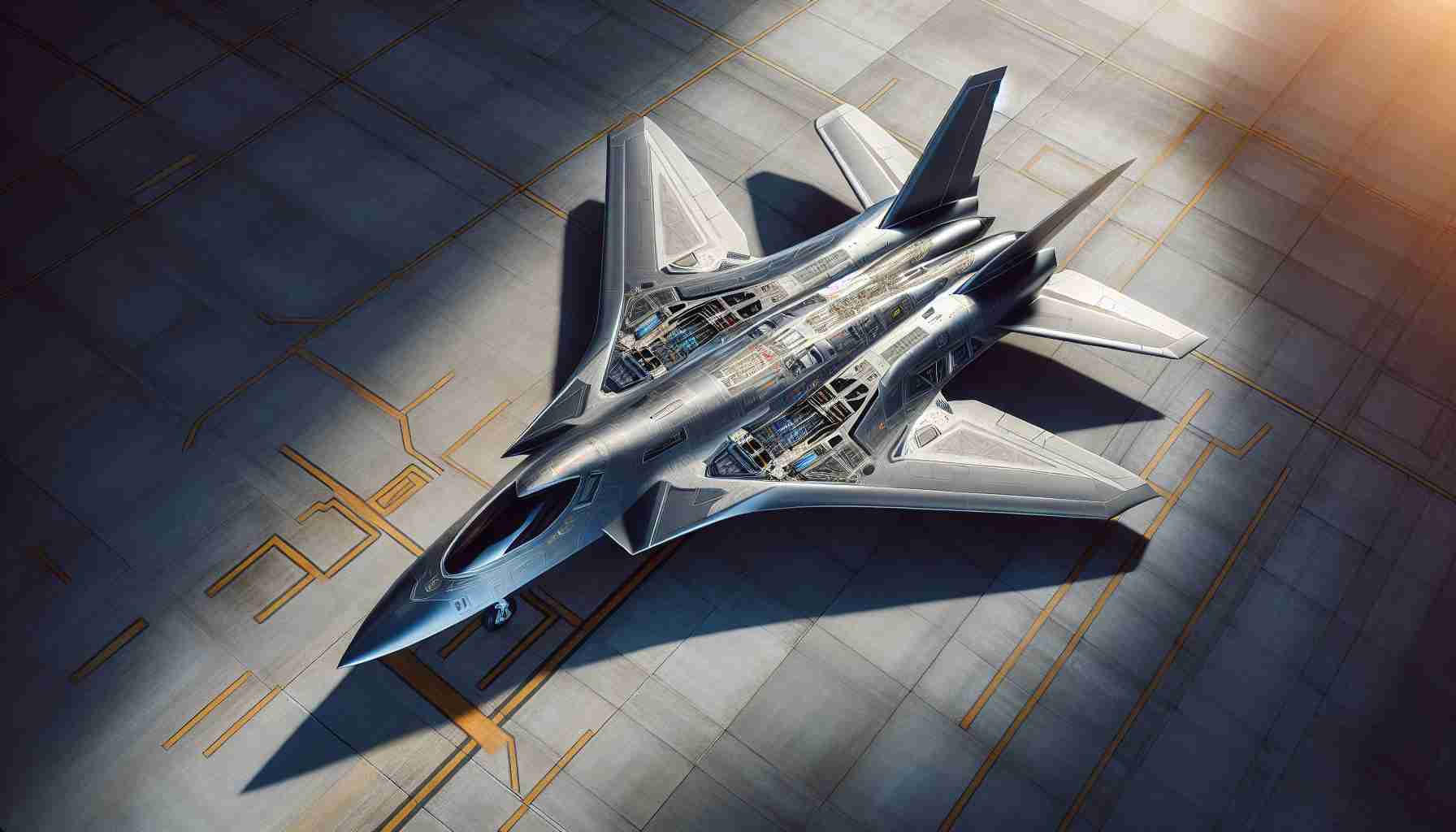The F-35 Lightning II is one of the most advanced multirole stealth fighters in history, designed to meet the demanding requirements of modern aerial warfare. With its capabilities stretching across a broad spectrum of operations, one critical aspect often examined is the durability of the F-35 during maximum-speed flights. Given its role in various air force operations worldwide, understanding this aspect is crucial for military strategists and aviation enthusiasts alike.
The F-35 has three variants: the F-35A (conventional takeoff and landing), the F-35B (short takeoff and vertical landing), and the F-35C (carrier-based). Each version is engineered for different environments, but they share a common engine—the Pratt & Whitney F135. This engine allows the F-35 to reach impressive speeds of up to 1.6 times the speed of sound (approximately Mach 1.6). However, operating the aircraft at such high velocities raises questions about its structural integrity and systems’ performance.
At maximum speeds, the F-35 experiences significant aerodynamic forces. The aircraft’s design incorporates composite materials and advanced engineering techniques that enhance its ability to withstand the stresses inflicted during high-speed maneuvers. This robustness is vital not only for the fighter’s performance but also for ensuring pilot safety and mission success. The use of stealth technology also requires that the aircraft maintains its shape and surface integrity to avoid radar detection, making durability even more critical during high-speed operations.
Furthermore, each flight is meticulously monitored by onboard systems that provide real-time data on the aircraft’s performance. This data aids in assessing the F-35’s durability under different flight regimes, including maximum speed. Maintenance protocols are established to ensure that any signs of wear or structural fatigue are detected early, allowing for timely repairs and minimizing operational risk.
Despite the impressive specifications and design improvements, operators must consider the operational limitations when pushing the F-35 to its maximum speed. Factors like fuel consumption, thermal stress, and aerodynamic heating play a significant role in determining the safe duration of high-speed flight. Continuous high-speed operation can lead to increased wear on components such as the engine and airframe, necessitating careful management of flight profiles during missions.
In summary, the durability of the F-35 during maximum speed operations is a testament to advanced aerospace engineering and the ongoing commitment to aircraft performance and safety. The combination of robust materials, state-of-the-art technology, and strict maintenance protocols ensures that the F-35 Lightning II remains a formidable presence in the skies, capable of executing its mission profile while withstanding the rigors of high-speed flight. As military needs evolve, ongoing assessments and enhancements will be pivotal in maximizing both the speed and durability of future operations.
Maximizing Aircraft Performance: Tips, Hacks, and Intriguing Insights
When it comes to high-performance aircraft like the F-35 Lightning II, understanding not just the technical specifications but also practical tips and interesting facts can enhance your appreciation for aviation. Here are some valuable insights regarding aircraft durability during maximum-speed flights, along with life hacks for aviation enthusiasts and professionals.
1. Understand Aircraft Materials
Did you know that the F-35 incorporates advanced composite materials that significantly contribute to its durability? Learning about these materials can give you a deeper understanding of modern aerospace engineering. For instance, carbon fiber reinforced polymer (CFRP) is commonly used for its strength-to-weight ratio. Exploring material science can help you grasp how these components handle extreme stress during flight.
2. Maintain Awareness of Aerodynamic Forces
During high-speed flights, aircraft endure tremendous aerodynamic forces. Pilots and engineers should be well-versed in the principles of aerodynamics to understand how factors like lift, drag, and turbulence impact flight performance. Consider studying basic physics related to flight dynamics to enhance your ability to predict performance outcomes under various conditions.
3. Monitor Engine Performance
The F-35 uses the Pratt & Whitney F135 engine, allowing it to reach speeds of up to 1.6 times the speed of sound. Regularly checking engine performance metrics is crucial. Aviation professionals should implement rigorous pre-flight checks and maintenance routines to ensure optimal performance, thereby prolonging engine lifespan and efficiency.
4. Optimize Flight Profiles
For those involved in flight planning, developing optimal flight profiles can greatly affect fuel consumption and operational efficiency. High-speed maneuvers should be balanced with considerations of aerodynamic heating and thermal stress, keeping the aircraft within safe operational limits. Utilizing advanced flight simulators for training can help crews practice these strategies safely.
5. Emphasize Pilot Training
Pilot training focused on understanding aircraft capabilities and limitations at maximum speeds is essential. Instructors should incorporate real-time data analysis during training sessions to prepare pilots for in-flight assessments. Upskilling through simulator exercises can enhance response times and compliance with safety protocols during high-speed missions.
6. Regular Maintenance and Inspections
Implementing strict maintenance schedules and inspections can help identify any signs of wear or structural fatigue before they become critical. Establishing a culture of safety where team members feel empowered to report issues can further enhance operational readiness.
7. Stay Updated on Technological Advances
The field of aviation technology is constantly evolving. Keeping abreast of the latest advancements—such as improved materials, better monitoring systems, and enhanced engine designs—can provide insights into future aircraft developments. Engaging with industry publications or attending aviation expos can be beneficial for enthusiasts and professionals alike.
Interesting Fact: The F-35’s stealth capabilities not only depend on its shape but also on its materials and coatings, which help minimize its radar cross-section. This interplay of design and material innovation highlights the advanced engineering required to produce a modern multirole fighter.
For those interested in deepening their knowledge of aviation technologies, consider exploring resources that cover aerospace engineering, military aviation, and flight safety. A great starting point is the official site of the aircraft manufacturer, Lockheed Martin: Lockheed Martin.
In conclusion, whether you are a military strategist, aviation enthusiast, or professional pilot, understanding the intricacies of aircraft performance, especially concerning durability and speed, will contribute to safer and more effective flight operations. Always prioritize knowledge and training as you engage with the captivating world of aviation.
The article has been updated: 2024-11-01 15:36
Here are some suggested related links:
1. Lockheed Martin – The official website of Lockheed Martin, the manufacturer of the F-35, providing information about the aircraft’s capabilities and technologies.
2. Naval Technology – A resource for news and updates on naval defense technologies, including the F-35’s role in modern naval operations.
3. Airforce Technology – A site that covers the latest advancements in air force technologies, featuring articles on fighter jets, including the F-35.
4. Defense News – A news outlet focused on defense industry developments, security news, and updates about military aircraft such as the F-35.
5. Janes – A trusted source of defense and security information, providing detailed analysis on military aircraft and their performance.
6. Thales Group – A global technology leader that collaborates with defense forces, often featured in discussions about the F-35’s systems and equipment.
7. Standpoint Defense – A platform providing expert insights and reports on defense technology and military aviation, including topics related to the F-35.
8. FlightGlobal – An aviation news and analysis platform that covers a wide range of topics including military aviation and the F-35’s operational performance.
9. Reuters – International news organization providing breaking news and analysis regarding defense contracts and military innovations, including the F-35.
10. BBC – The British Broadcasting Corporation offers coverage on major defense initiatives and aircraft like the F-35, examining its development and operational challenges.
The article has been updated: 2024-11-03 01:18
What factors contribute to the durability of the F-35 flight at maximum speed?
The durability of the F-35 flight at maximum speed is influenced by several key factors. Firstly, the aircraft’s advanced materials, including carbon fiber and titanium alloys, provide significant structural integrity while keeping weight low. Secondly, the F-35 is equipped with sophisticated thermal management systems that control heat generated by high-speed flight, safeguarding critical components from thermal stress. Additionally, the aerodynamic design of the F-35 minimizes drag and enhances performance, allowing it to maintain maximum speed without compromising durability. The continuous testing and stringent maintenance protocols also ensure that the aircraft remains within safe operational limits during high-speed maneuvers. Overall, these elements work together to enable the F-35 to perform effectively at maximum speeds while preserving its structural integrity and operational longevity.






















